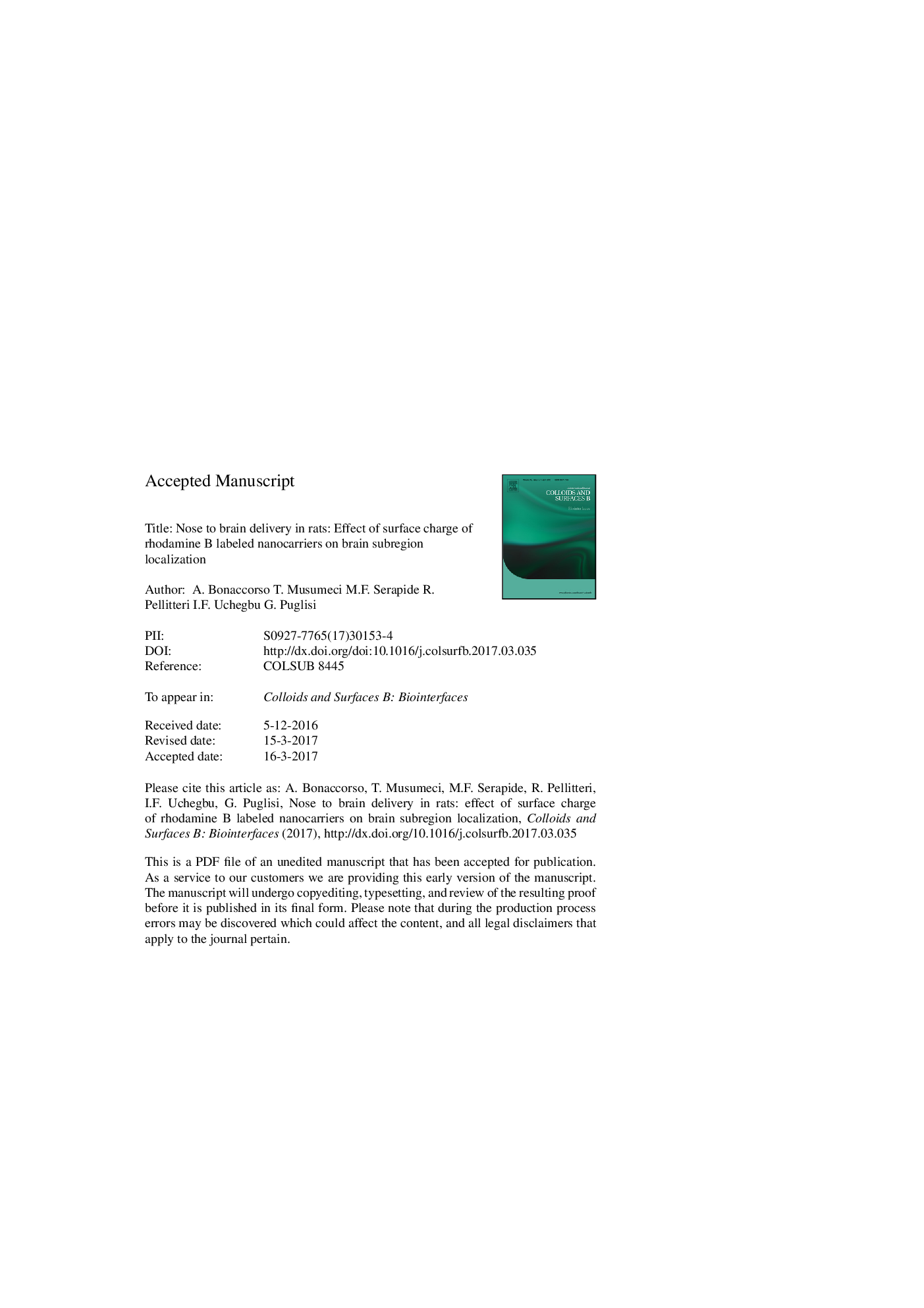| Article ID | Journal | Published Year | Pages | File Type |
|---|---|---|---|---|
| 4983339 | Colloids and Surfaces B: Biointerfaces | 2017 | 42 Pages |
Abstract
Schematic representation of rhodamine-labeled NPs distribution, 8, 24 and 48Â h after IN administration in rat. Red spot indicates NPA; blue-red spot indicates NPBC3. The intense, moderate and weak labeling correspond to large, medium and small spots respectively. The brain areas investigated are: cerebral cortex (beige); basal ganglia (light blue); hippocampus (green); thalamus (pink); mesencephalon (orange); cerebellar cortex and nuclei (violet); myelencephalon (yellow).
Keywords
δtGRASLMWPFAPLAN2bΔHTSINPANose to brainPLGA NPsPoly-lactide-co-glycolideFDAe.e.PBSDSCPLGAturbiscan stability indexNPsIntranasalEncapsulation efficiencygenerally recognized as safeIntranasal deliveryEnthalpy changesCNSPCsFood and Drug Administrationblood brain barrierBBBCerebral Spinal Fluidcentral nervous systemmononuclear phagocyte systemphoton correlation spectroscopyCSFphosphate buffer solutionSEMin vivo studyBrainRatsScanning electron microscopyFluorescent microscopyNanoparticlesMPslow molecular weightparaformaldehydeDifferential scanning calorimetryChitosan
Related Topics
Physical Sciences and Engineering
Chemical Engineering
Colloid and Surface Chemistry
Authors
A. Bonaccorso, T. Musumeci, M.F. Serapide, R. Pellitteri, I.F. Uchegbu, G. Puglisi,
